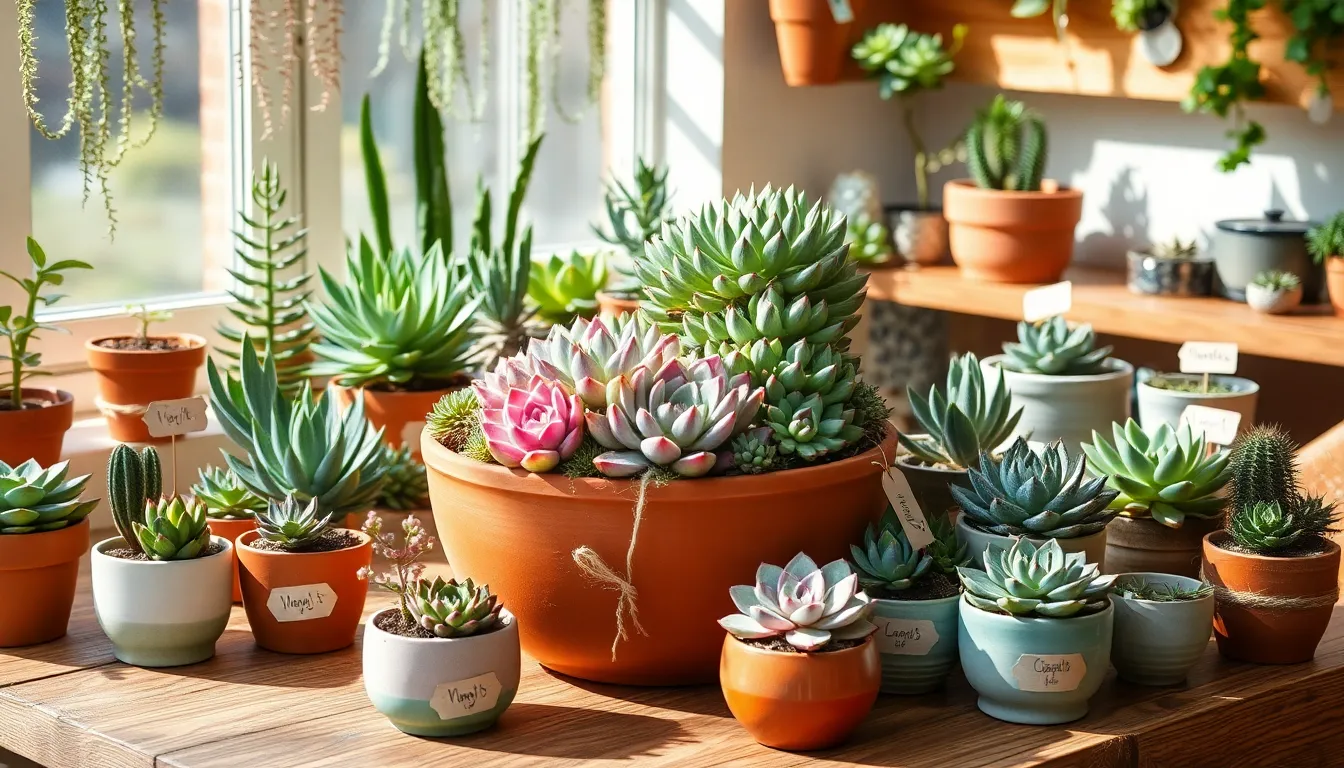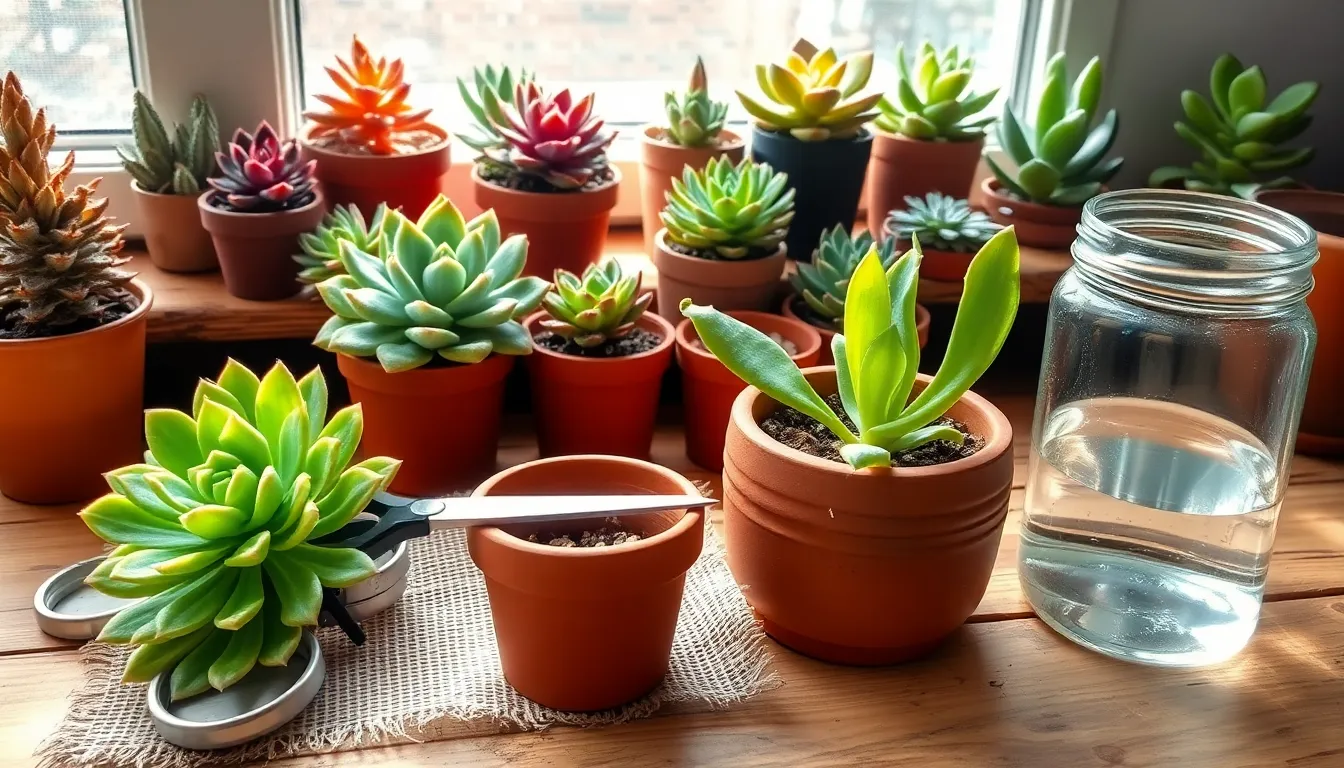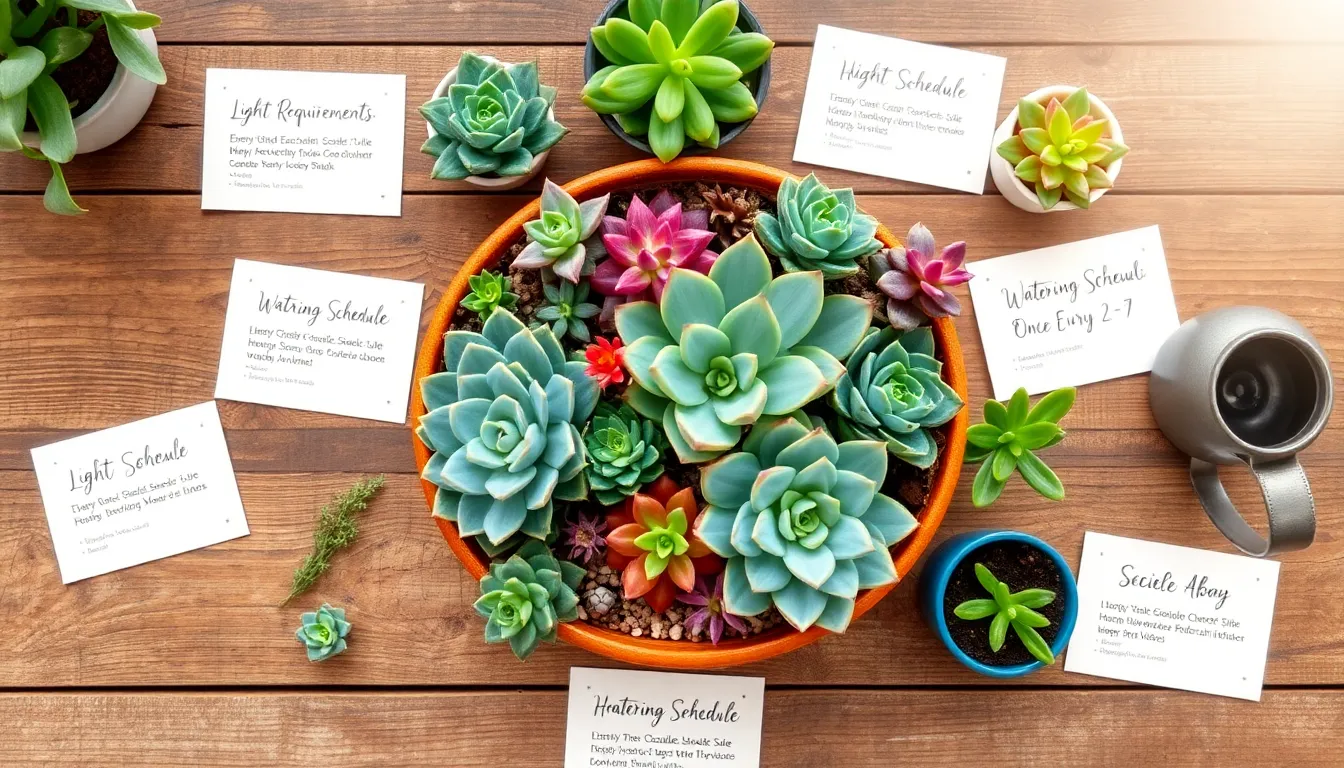Unlocking the secrets to watering succulents can transform your gardening experience, whether you’re just beginning or have a seasoned green thumb. These captivating plants, with their plump leaves and striking forms, bring a touch of the exotic to any space, but their unique watering needs can perplex even the most experienced gardeners. Understanding when and how to water succulents is crucial not only for their survival but also for their vibrant growth and long-lasting beauty.
In this article, we’ll delve into the art of succulent hydration, guiding you through the delicate balance required to keep these plants thriving. You’ll discover the signs that your succulents are thirsting for a drink, and learn the ideal watering techniques that prevent the dreaded root rot. By the end of this journey, you’ll be equipped with the knowledge to care for your succulents confidently, cultivating a flourishing indoor or outdoor oasis.
Our exploration will cover the importance of considering your environment, from light conditions to potting mix, as these factors play a pivotal role in determining your watering schedule. We’ll also discuss seasonal adjustments, ensuring your succulents receive just the right amount of moisture throughout the year. Join us as we demystify the process, empowering you to nurture your succulents with the precision and care they deserve.
Assess Soil Moisture Levels
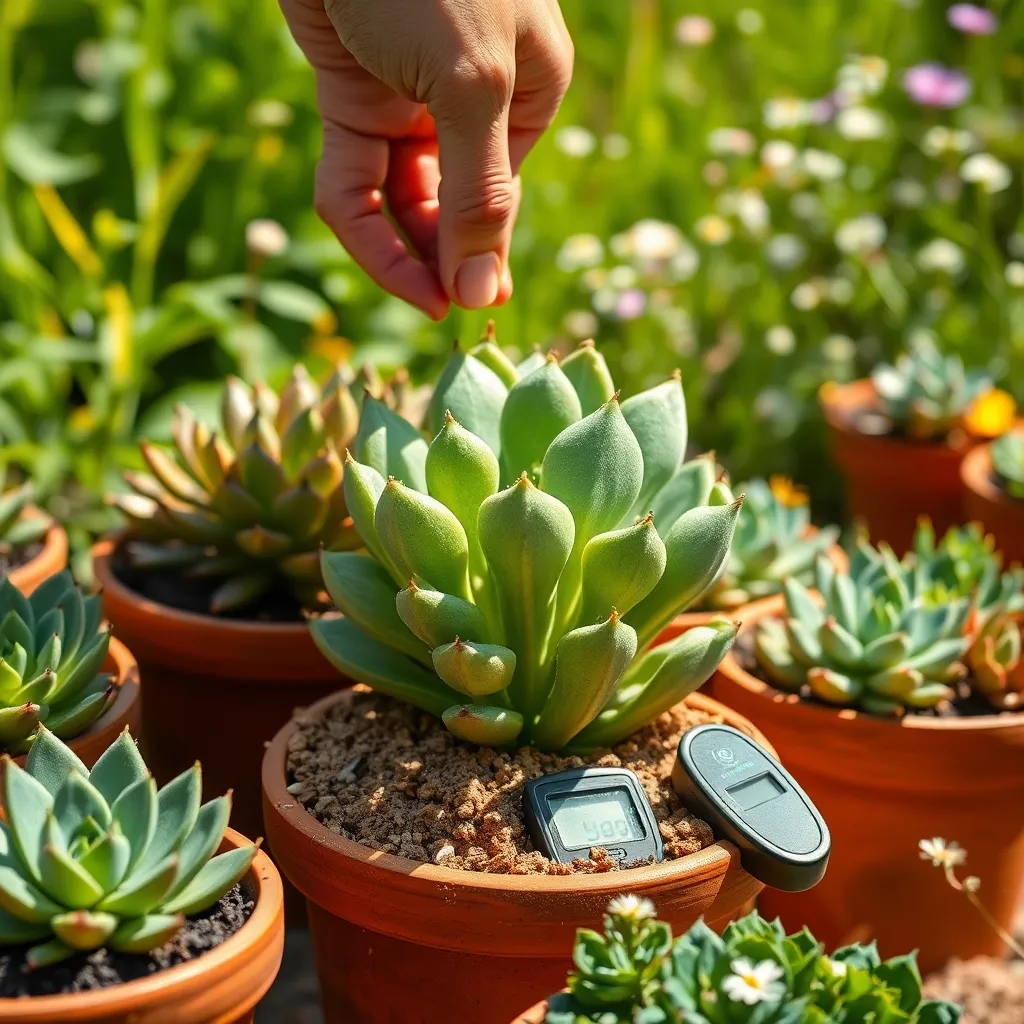
To effectively water your succulents, it’s crucial to first assess the soil moisture levels. Insert your finger about an inch into the soil; if it feels dry, it’s time to water your plant.
Alternatively, you can use a moisture meter for more precise readings, especially for those who prefer a gadget-friendly approach. These tools are affordable and provide accurate insights into whether your succulent truly needs water.
Understanding the type of soil your succulents grow in is also important. Succulents thrive in well-draining soil, such as a cactus mix, which minimizes the risk of overwatering.
For gardeners looking to optimize their watering routine, consider the climate where your succulents are located. In humid environments, soil retains moisture longer, so watering should be less frequent compared to arid regions.
Determine Appropriate Watering Time
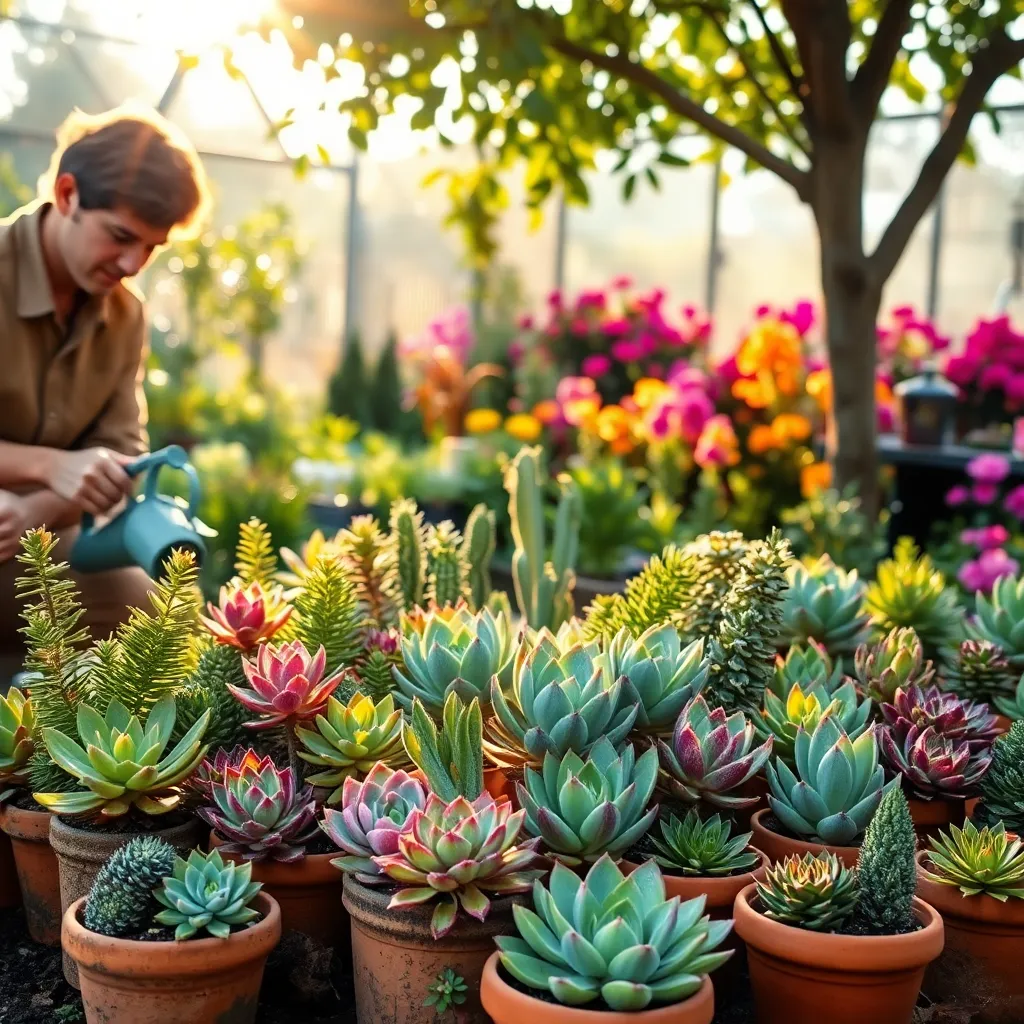
Timing is crucial when it comes to watering your succulents, as it directly impacts their health. It is generally best to water your succulents early in the morning when the temperatures are cooler, allowing the water to soak into the soil without evaporating too quickly.
During the growing season, which typically spans from spring to early fall, succulents require more frequent watering. However, in the dormant winter months, you should reduce watering significantly, as the plants need less moisture.
To determine if your succulent needs water, check the soil moisture level by inserting your finger about an inch deep. If the soil feels dry at that depth, it’s time to water; if it feels damp, wait a few more days and check again.
For those living in particularly humid environments, you might find that your succulents need watering less often. Conversely, in arid conditions, you may need to water more frequently, but always adhere to the golden rule of allowing the soil to dry out completely between waterings.
Use Correct Watering Technique
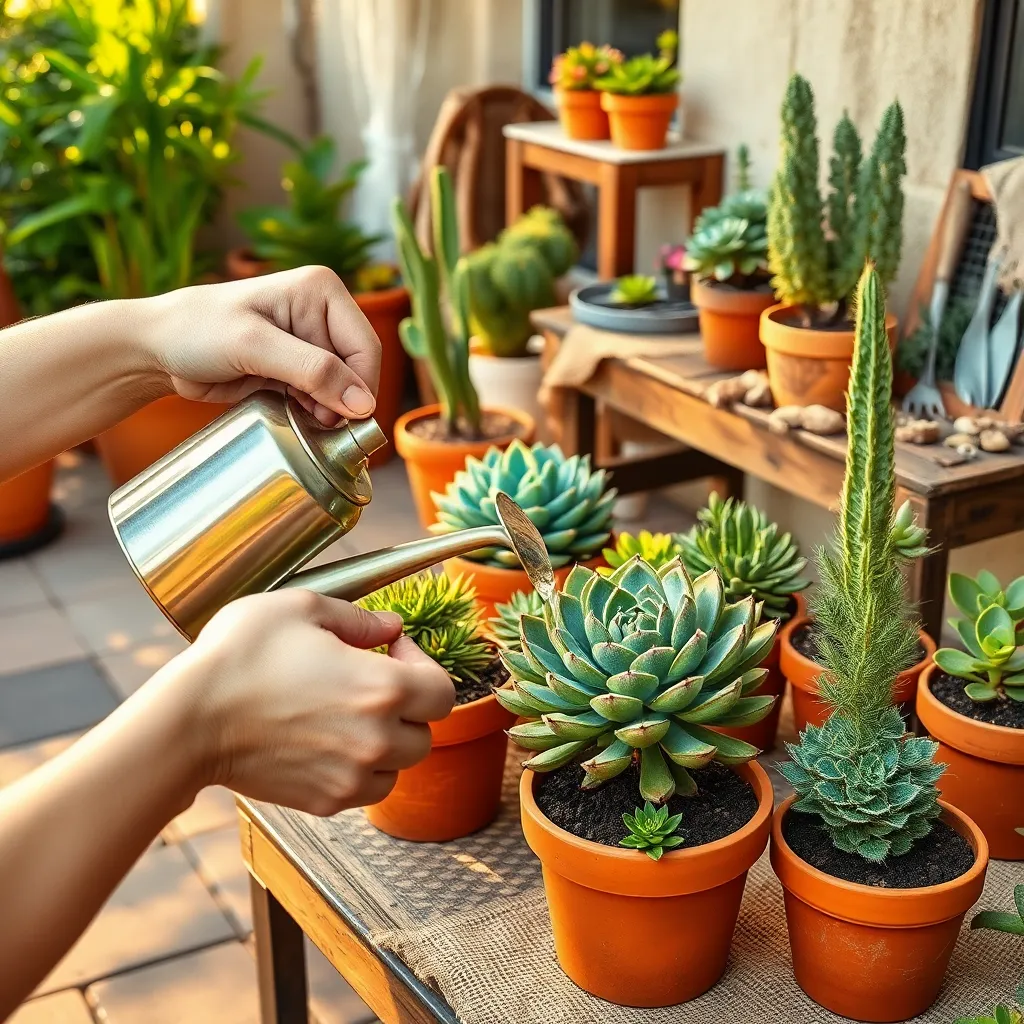
Watering succulents correctly is crucial to their health and vitality. Overwatering is the most common mistake and can lead to root rot, making it vital to understand the plant’s needs.
When watering, thoroughly soak the soil and allow excess water to drain away completely. Succulents prefer a “soak and dry” method, where you let the soil dry out entirely between waterings.
To check if your succulent needs water, insert your finger about an inch into the soil. If it feels dry at this depth, it’s time to water; if it’s still moist, wait a few more days.
For best results, use a pot with drainage holes to prevent water from pooling at the bottom. Ensure the soil is well-draining; a mix of cactus soil and perlite is ideal for promoting healthy root development.
Advanced gardeners might try bottom watering by placing pots in a shallow tray of water, allowing the soil to absorb moisture from the base. This technique can be particularly effective in encouraging deep root growth and ensuring even moisture distribution.
Remember, succulents store water in their leaves, so they require less frequent watering compared to other houseplants. Adapting your watering technique to the needs of your succulents will lead to a thriving collection.
Allow Soil to Fully Drain

Ensuring your succulents’ soil fully drains is crucial for their health and growth. Succulents are prone to root rot if left in waterlogged soil, so proper drainage is essential.
Choose a soil mix specifically designed for succulents and cacti, which typically contains a high proportion of sand or perlite. This type of soil allows excess water to escape quickly, preventing moisture from lingering around the roots.
For those creating their own soil mix, combine equal parts potting soil, coarse sand, and perlite for optimal drainage. This homemade mix will ensure that your succulents receive the right balance of moisture retention and aeration.
When planting succulents in containers, make sure they have drainage holes at the bottom. If using decorative pots without holes, consider double-potting by placing the succulent in a plastic pot with drainage and then setting it inside the decorative one.
In addition to choosing the right soil, monitor the frequency of watering. It’s best to wait until the soil is completely dry before watering again, which might mean watering once every two weeks or less, depending on your climate and the season.
Advanced gardeners might consider using a moisture meter to accurately gauge the soil’s dryness level. This tool can help you determine when it’s truly time to water, reducing the risk of overwatering.
By allowing the soil to fully drain, you create an environment where succulents thrive. This simple yet effective practice can dramatically improve their growth and longevity.
Adjust Watering Frequency Seasonally
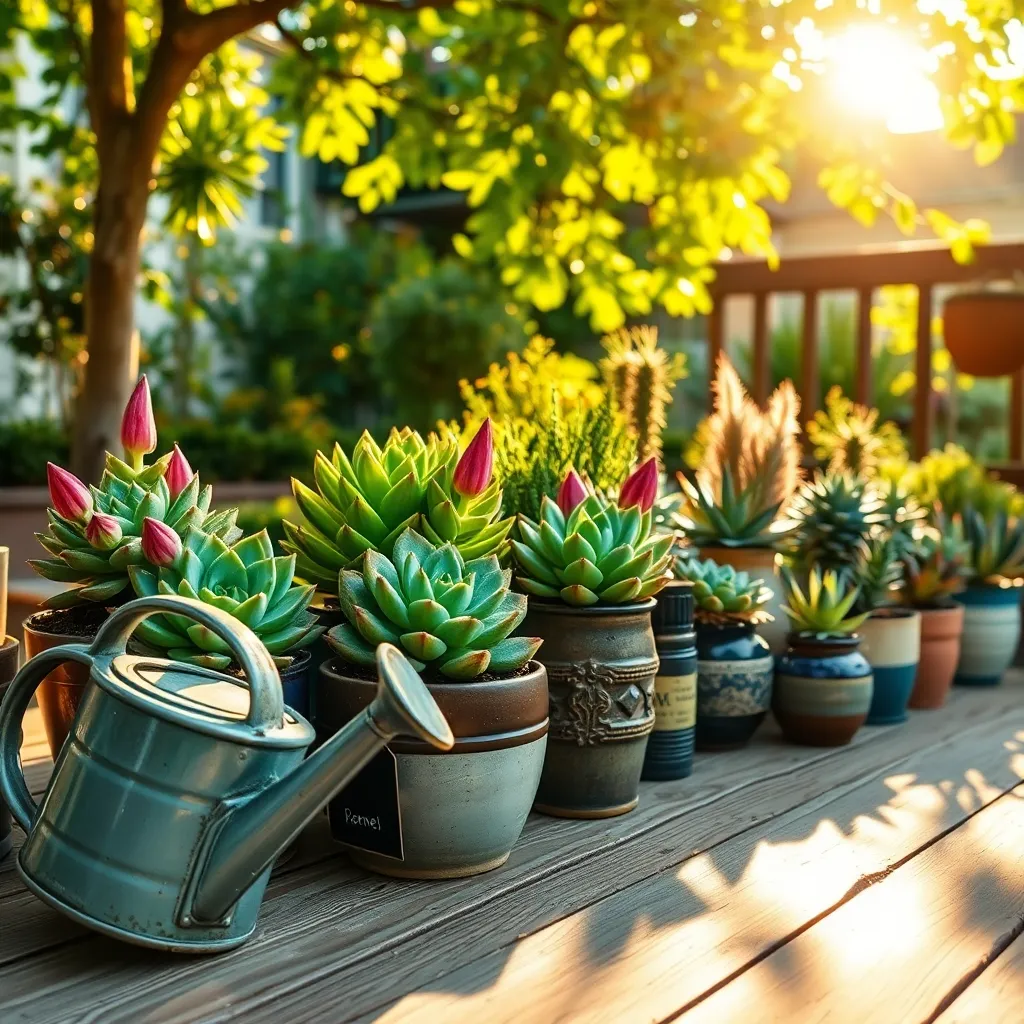
Understanding the seasonal needs of succulents is crucial to maintain their health all year round. During the growing season, which typically spans from spring to early fall, succulents require more water as they actively develop new leaves and roots.
In contrast, during the dormant period of late fall and winter, succulents need significantly less water. It’s essential to reduce watering frequency during this time, allowing the soil to dry out completely between waterings to prevent root rot.
Adjust your watering schedule according to the temperature and humidity levels—in warmer, dryer climates, succulents may need a bit more water even in winter. However, always err on the side of caution and prioritize letting the soil dry out entirely.
To optimize care, feel the soil about an inch below the surface to ensure it’s dry before watering again. For those with more experience, consider using a moisture meter for precise readings, which can be especially helpful during seasonal transitions.
Conclusion: Growing Success with These Plants
As we explored the nurturing parallels between caring for succulents and fostering healthy relationships, we uncovered five key concepts: understanding each other’s needs, timing your interactions wisely, recognizing signs of distress, adjusting to changing conditions, and cultivating patience. These insights remind us that just like succulents, relationships thrive with attentive care and adaptability.
Now, take action by choosing one relationship in your life and apply these concepts starting today. Whether it’s reaching out to someone you’ve been meaning to connect with or taking a moment to listen more deeply, small steps can lead to significant growth.
For ongoing guidance and inspiration, save this article to your bookmarks. It will serve as a handy reference when you need to refresh your approach or when you seek reassurance that you’re on the right path.
Remember, nurturing relationships is a journey, not a destination. With each thoughtful action, you pave the way for deeper connections and enduring success in your personal interactions. Embrace the journey, and watch your relationships flourish like a well-tended garden.

